Human Flower Project
Suburbia Keep It Hillocky
By on February 28th, 2022 in
Suburbia: Keep It Hillocky
Where do the suburbs end and Suburbia begin? John Levett remembers an English developer and keeps track of the Vuitton handbags cropping up in Petts Wood, what once was London’s southeastern edge.

All photos of Petts Wood: John Levett
By John Levett
Uncle Jack and Aunt Beattie lived in Beckenham in Kent. Mum and I lived in Bromley; a bus ride away. Mum ran a small grocer’s shop and Jack and Beattie bought vegetables from her. I took the vegetables over to Beckenham on the bus. At Jack and Auntie Beattie’s I got to watch television. That was the reason they bought the vegetables. We didn’t have a television and they did and they could more easily have bought their fruit and veg round the corner than take the delivered-to-your-door-by-a-smiling-kid-on-a-bus option. But this was 1953 and they were better off than we were. The television is the key class indicator here. Inviting me over to watch it would point up the class discrepancy within the family and that wasn’t very English. The vegetables were the McGuffin.
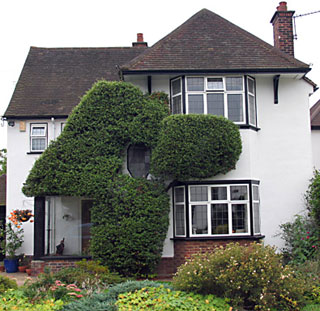 It’s difficult to convey the gradations and gradations-within-gradations of the English class system which strangled British society throughout the last century. One example. I first went to university in 1964. It was required at that time that one had a medical exam before entry. I turned up at the surgery of the appointed doctor whose first words to me were: ‘Don’t you think you ought to have shaved before you came?’ That still rankles forty years later. It wasn’t only his assumption that in his position he was allowed to make such a comment but my reaction of allowing the comment to pass by default and wondering whether, indeed, I should have shaved before I came. Altogether … ‘He made them high and lowly, and ordered their estate.’
It’s difficult to convey the gradations and gradations-within-gradations of the English class system which strangled British society throughout the last century. One example. I first went to university in 1964. It was required at that time that one had a medical exam before entry. I turned up at the surgery of the appointed doctor whose first words to me were: ‘Don’t you think you ought to have shaved before you came?’ That still rankles forty years later. It wasn’t only his assumption that in his position he was allowed to make such a comment but my reaction of allowing the comment to pass by default and wondering whether, indeed, I should have shaved before I came. Altogether … ‘He made them high and lowly, and ordered their estate.’
Uncle Jack sold print and Auntie Beattie kept home. Mum sold groceries and kept me and gran. The difference was that between middle class and lower-middle class. They lived in a villa in a tree lined avenue. We had a back garden backing on to a banana warehouse. We lived in a suburb. They lived in Suburbia. How to tell the difference?
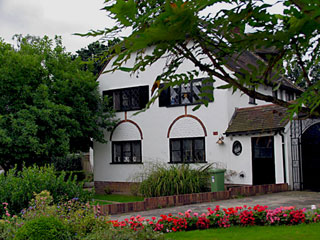 There is a difference and I doubt it’s only in my mind. Here’s how it goes. Cities sprawl and continue doing it unless there’s some major impediment like a mountain, ocean or government anti-sprawl law. London, contrary to belief, is hilly but not mountainous, is far enough away from the North Sea for it to be ignored and, until the post-Word War II Green Belt, had little to stop it edging out, plot by plot. In most cases the sprawl just added another few streets to the edge of what was already there, accommodating the slightly more prosperous before being slightly more cramped by the every-so-slightly-more prosperous arriving on the next builder’s plot. That’s living in a suburb. It’s what was once at the edge before somewhere else became the edge. You could get about with a bus in a suburb but Suburbia needed a train.
There is a difference and I doubt it’s only in my mind. Here’s how it goes. Cities sprawl and continue doing it unless there’s some major impediment like a mountain, ocean or government anti-sprawl law. London, contrary to belief, is hilly but not mountainous, is far enough away from the North Sea for it to be ignored and, until the post-Word War II Green Belt, had little to stop it edging out, plot by plot. In most cases the sprawl just added another few streets to the edge of what was already there, accommodating the slightly more prosperous before being slightly more cramped by the every-so-slightly-more prosperous arriving on the next builder’s plot. That’s living in a suburb. It’s what was once at the edge before somewhere else became the edge. You could get about with a bus in a suburb but Suburbia needed a train.
 Suburbia was beyond the edge. Suburbia had a vision. Usually a Builder’s vision of an Estate. (Stay with the plot: suburbs had a builder with a plot; Suburbia had a Builder with an Estate.) Suburbia created distance, ‘away-ness,’ ‘apart-ness,’ a place to be travelled to, a difference to go home to, a difference of going home on the bus and commuting by rail. ‘Commuting’—there’s new! The Builder’s vision of themselves possibly that of the estate patrons of the eighteenth and nineteenth centuries (a touch of quality and buyers to match) put together with landscapers of a later vintage—shrubberies and groves, ponds and lakes—‘gardenesque.’ Villas similar but distinguishing, curves and rises, hidden curiosities, avenues and closes, cul-de-sacs and crescents. No hint of trade; shopkeepers at a useful distance but convenient for the delivery boy and the housewife on housewifely business.
Suburbia was beyond the edge. Suburbia had a vision. Usually a Builder’s vision of an Estate. (Stay with the plot: suburbs had a builder with a plot; Suburbia had a Builder with an Estate.) Suburbia created distance, ‘away-ness,’ ‘apart-ness,’ a place to be travelled to, a difference to go home to, a difference of going home on the bus and commuting by rail. ‘Commuting’—there’s new! The Builder’s vision of themselves possibly that of the estate patrons of the eighteenth and nineteenth centuries (a touch of quality and buyers to match) put together with landscapers of a later vintage—shrubberies and groves, ponds and lakes—‘gardenesque.’ Villas similar but distinguishing, curves and rises, hidden curiosities, avenues and closes, cul-de-sacs and crescents. No hint of trade; shopkeepers at a useful distance but convenient for the delivery boy and the housewife on housewifely business.
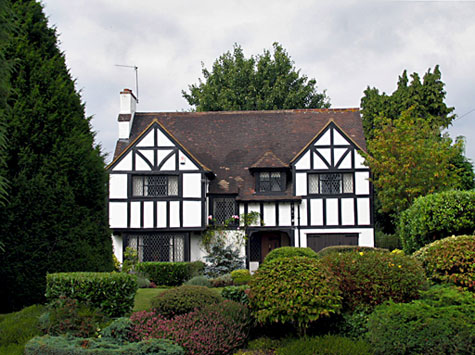
Countryside names came with them—something-Woods, another-thing-Hall, Park, Green, Oaks, Beeches. Then chapels and institutes; bowling greens and cricket clubs; shortly a police station (but surely this was no place for footpads or scurvy eastenders?); later, maybe, a club or two, certainly a Residents’ Association. Prices matched the reach of the aspirational and (‘What a relief, darling’) stretched past the grab of the unwanted. The railway company, class-aware, located itself conveniently for those who could afford its fares. The banker, someone in shipping, the solicitor and the consultant, the managing director and the oil company executive. Meanwhile, in the smaller petit-suburbia, those whose means just wouldn’t stretch that far out.
What to make of Suburbia once they got there? Its golden age was that between the two great wars of the last century; a time to mirror some sort of never-was time—Merrie England touched with cod-Mediaevalism attached to Victorian stained glass; a time for new roots in freshly-cut sod amongst one’s people. Al Bowlly, Harry Roy and ‘Blue Moon’ on the radio. Married couples with the papers to show it; no footballers or unaccompanied ladies. So what did they make of it?
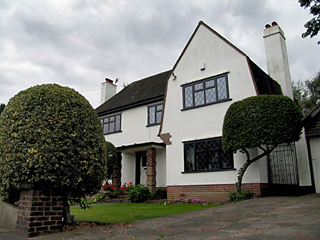 It’s difficult on this island to find still-existing communities on the edge of cities that haven’t been diluted by conversions and extensions, in-fill, redevelopment, raze-and-rebuild but Petts Wood is one. It was the work of a developer named Basil Scruby; one of many such who came to wealth in the post-Great War ‘Homes For Heroes’ building boom. But Basil was no fly-by-night, get-rich-quick spiv; Basil had vision. Petts Wood was to be no suburb and would exceed Suburbia. This was Garden Suburbia. Work was begun in the late 1920s on what was largely out-of-London countryside but not to a detailed grand scheme. Scheme there was but it was benevolent (if building developers are ever that) rather than dictatorial; in the spirit of garden suburb rather than garden city. Plots of the estate he had bought were sold off to individual builders but were to be so designed and built upon as to reflect Basil’s overall scheme of harmony, quality of materials and rurality. There was no razing and flattening—dells remained dells and hillocks stayed hillocky.
It’s difficult on this island to find still-existing communities on the edge of cities that haven’t been diluted by conversions and extensions, in-fill, redevelopment, raze-and-rebuild but Petts Wood is one. It was the work of a developer named Basil Scruby; one of many such who came to wealth in the post-Great War ‘Homes For Heroes’ building boom. But Basil was no fly-by-night, get-rich-quick spiv; Basil had vision. Petts Wood was to be no suburb and would exceed Suburbia. This was Garden Suburbia. Work was begun in the late 1920s on what was largely out-of-London countryside but not to a detailed grand scheme. Scheme there was but it was benevolent (if building developers are ever that) rather than dictatorial; in the spirit of garden suburb rather than garden city. Plots of the estate he had bought were sold off to individual builders but were to be so designed and built upon as to reflect Basil’s overall scheme of harmony, quality of materials and rurality. There was no razing and flattening—dells remained dells and hillocks stayed hillocky.
Copywriters built the dream: “houses that, despite their widely differing styles, merge naturally into the green vistas of woodland that form the background. A sylvan town with birds, trees, flowers – a real country home.” A shopping centre followed and the Southern Railway obliged with a fresh, fine and dandy station to Victoria and Charing Cross. The station opened in 1928; the essential Petts Wood was completed by its church in 1935.
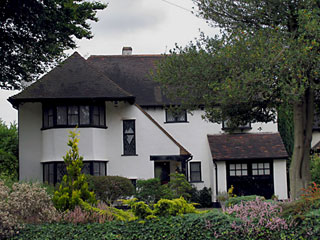 Take the train out through London Bridge, New Cross and Lewisham and beyond the inner suburbs; past Grove Park with its own ‘Homes Fit For Heroes’ public housing estates of Downham and Bellingham; south to Petts Wood. Be careful which way you turn when exiting. Petts Wood has a ‘wrong side of the tracks.’ West of the railway line is the, more-than-slightly, less well-appointed Petts Wood West. By the mid-1930’s Scruby was a bit strapped for cash and the plots went for sale there without too much of an eye for creating the town in the country; more a class of building for a lower class of person (“I’m so glad there’s the railway between us darling. You don’t think they’ll want to shop here do you?”)
Take the train out through London Bridge, New Cross and Lewisham and beyond the inner suburbs; past Grove Park with its own ‘Homes Fit For Heroes’ public housing estates of Downham and Bellingham; south to Petts Wood. Be careful which way you turn when exiting. Petts Wood has a ‘wrong side of the tracks.’ West of the railway line is the, more-than-slightly, less well-appointed Petts Wood West. By the mid-1930’s Scruby was a bit strapped for cash and the plots went for sale there without too much of an eye for creating the town in the country; more a class of building for a lower class of person (“I’m so glad there’s the railway between us darling. You don’t think they’ll want to shop here do you?”)
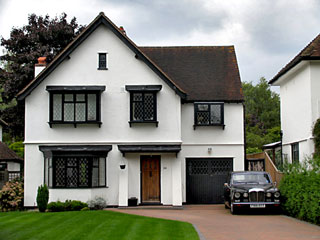 Exit east and turn left past the global fast-food shops, hairdressers, DVD emporia and estate agents and Scruby’s vision lives. There is a unity to Petts Wood that is remarkable. It’s not possible to ignore the dual parking in most driveways (the overland 4×4’s so essential for crossing the High Sierras and Badlands of the Kent Weald) but stand still on a curve of a road and take in the ‘Tudorbethan’ of an out-of-city Nowhere and you know why Scruby had no problem in selling plots and plot-holders easily sold the vision.
Exit east and turn left past the global fast-food shops, hairdressers, DVD emporia and estate agents and Scruby’s vision lives. There is a unity to Petts Wood that is remarkable. It’s not possible to ignore the dual parking in most driveways (the overland 4×4’s so essential for crossing the High Sierras and Badlands of the Kent Weald) but stand still on a curve of a road and take in the ‘Tudorbethan’ of an out-of-city Nowhere and you know why Scruby had no problem in selling plots and plot-holders easily sold the vision.
It’s neat in a postcard way; neat on the pages of a 1937 Picture Post. There’s Janet and John skipping round the corner with Bob the dog. Laura in a two-piece, brown-gloved, behatted and meeting a friend in the tearoom. Stan the butcher’s delivery boy whistles ‘Pennies from Heaven’ as he cycles up Woodland Way. Bluebirds perch on magnolia trees and cats cushion themselves on scissors-cut lawns.
 There are rumbles. The Chenies, on the eastern edge of Petts Wood, is now deemed a conservation area—meaning so perfect of its type that alterations to housing required the permission of the local council. I stopped to speak to one of the residents who took me as a rep of the local council checking up to see if any such alterations had been slipped in without due notice given. It seems that such is happening. ‘Footballers’ wives’ were the problem. No respect for conservation, no idea of history, no sense, no brain. Just five types of Louis Vuitton handbag. The council, it seems, is inconsistent—‘Yes’ to one alteration, ‘No’ to another and thereby giving rise to lawyers, fees, litigation and the dilution of Scruby’s picture-in-his-head.
There are rumbles. The Chenies, on the eastern edge of Petts Wood, is now deemed a conservation area—meaning so perfect of its type that alterations to housing required the permission of the local council. I stopped to speak to one of the residents who took me as a rep of the local council checking up to see if any such alterations had been slipped in without due notice given. It seems that such is happening. ‘Footballers’ wives’ were the problem. No respect for conservation, no idea of history, no sense, no brain. Just five types of Louis Vuitton handbag. The council, it seems, is inconsistent—‘Yes’ to one alteration, ‘No’ to another and thereby giving rise to lawyers, fees, litigation and the dilution of Scruby’s picture-in-his-head.
I can see sides of most arguments but if I were to move into a peach of a piece of historical dream-making I’d want to keep it that way; playing time games against the soundtrack of a scratched shellac record, Edward VIII’s abdication speech and Neville Chamberlain’s declaration of war. I’d play Vaughan-Williams symphonies, read Orwell and Woolf (but never together), tick off items from this Autumn’s seed catalogues, listen to this evening’s Prom broadcast, plan next Spring’s bulbs. I might want a place away, a place to forget slump, wars and expectations of wars, the expansion of intolerance, the fading of liberalism. Away from all that. Seats at all prices to those with a big enough handbag.
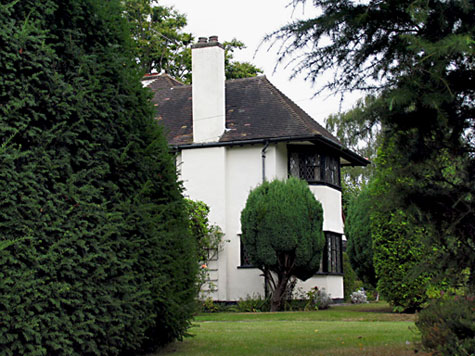
Addendum—First lesson, Take off the lens cap: I spent six hours walking around Petts Wood on a weather-dodgy day and shot over three hundred photographs. Over the next week I spent time sorting and cataloguing, indexing and selecting, cropping, adjusting and all the other bits that go with digital photography these days. It was only when I came to printing A3 proofs that I caught trouble. Large blocks of unsubtle colour, pixels the size of fingerprints, sludge. Only then did I clock the size of my digital images. A couple of days before I shot Petts Wood I had shot some passport photos and failed to reset my camera. First time, last time. I hope. You never had that trouble with film!
Comments
My Anglo-ish mother dictated that growing vegetables in the front yard was improper. Maybe these folks have lots of carrots and tomatoes hidden from street view. Did you look around back, John?
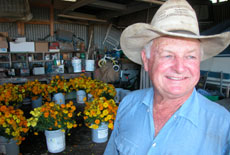

So many approaches to front yard gardening are quite interesting, though no one seems to have embraced Fritz Haeg’s “edible estates” concept.
One of favorite bits from this essay is – “It’s neat in a postcard way; neat on the pages of a 1937 Picture Post. There’s Janet and John skipping round the corner with Bob the dog. Laura in a two-piece, brown-gloved, behatted and meeting a friend in the tearoom. Stan the butcher’s delivery boy whistles ‘Pennies from Heaven’ as he cycles up Woodland Way. Bluebirds perch on magnolia trees and cats cushion themselves on scissors-cut lawns.”